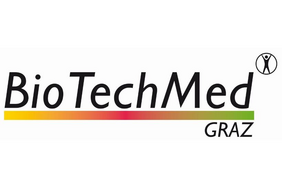The 4th International Meeting on Antimicrobial Peptides (IMAP 2014), sponsored by BioTechMed-Graz and organized by the Institute of Molecular Biosciences (IMB), University of Graz took place at the end of September in a very friendly and festive atmosphere in the Meerscheinschlössl of the University of Graz.
Since the development of the first commercially available antibiotics the high expectations for the healing power of these “wonder drugs” have not been fulfilled because of the emergence of (multi-)resistant bacteria. Therefore, the development of novel antibiotics has become an urgent matter. Antimicrobial peptides, the focus of this conference, represent such an alternative strategy. Approx. 70 scientists from Europe and Overseas presented their current research in this field contributing to a varied and highly interesting program.
After the welcome address by Univ.-Prof. Dr. Kai-Uwe Fröhlich, head of the IMB, the representative of BioTechMed-Graz, Univ.-Prof. Dr. Harald Mangge, introduced this cooperation and network initiative for the University of Graz, the Medical University of Graz, and Graz University of Technology to the international audience, which was highly received.
The first day of the conference was devoted to model systems and mechanistic studies in order to gain a better understanding on the molecular mode of action of antimicrobial peptides, part of the innate immune system. This will form the basis for the rational design of novel antibiotics.The BioTechMed-sponsored lectures were delivered within this session. Ayyalusamy Ramamoorthy, University of Michigan, explained the audience his atomic view on the toxicity of antimicrobial peptides as well as amyloid peptides, while Gerard C.L. Wong, California NanoSystems Institute of the University of California Los Angeles, demonstrated how signal molecules guide the exploration and micro-colony formation in biofilms, which can hardly be treated by conventional antibiotics.

Picture 1: A. Ramamoorthy (left) and G.C.L. Wong (right) at their BioTechMed-Graz lecture
Biofilms and how they can be treated with antimicrobial peptides were also the topic of the morning session of the second day, where two coordinators of respective EC-projects (Karin Thevissen, Catholic University of Leuven, and Sebastian A. J. Zaat, Amsterdam Medical Research Center) were invited as speakers. Karl Lohner from the IMB and chairman of IMAP 2014 has been involved in one of the EC-projects as work-package leader. In the final session reports on in vivo studies and examples of applications were given.

Picture 2 left: Disputant S.A.J. Zaat; Picture 3 right: Disputant B. Bechinger (Uni Strasbourgh), R. Leber (IMB, Uni Graz), C. Rush (Isca Biochemicals Ltd., Exeter, UK) and K. Thevissen (from left to right)
All contributions were lively discussed and debates continued intensively during the coffee and lunch breaks as well as poster sessions. To conclude on this successful meeting probably a quote from a student fellow will do it best: “Thank you for the opportunity you gave us, “young researchers”, to share ideas and results with more experienced people.” In the same line the organizers want to thank BioTechMed-Graz for their support, which enabled the organizing committee to invite leading researchers of the field to this conference and hence to guarantee a top conference, which in 2015 will be held in London at the Royal Society of Chemistry.

Picture 3: Audience at lecture and poster session

